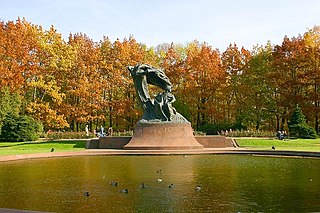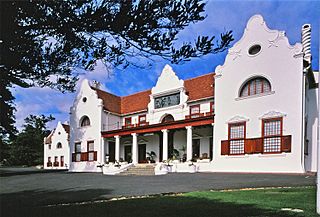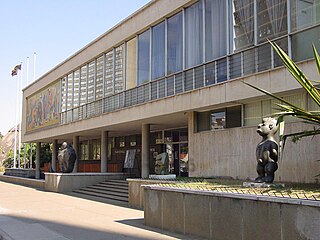
Mutare, originally known as Umtali, is the most populous city in the province of Manicaland, and the third most populous city in Zimbabwe, having surpassed Gweru in the 2012 census, with an urban population of 224,802 and approximately 260,567 in the surrounding districts giving the wider metropolitan area a total population of over 500,000 people. Mutare is also the capital of Manicaland province and the largest city in Eastern Zimbabwe.

Deoksugung (Korean: 덕수궁) also known as Gyeongun-gung, Deoksugung Palace, or Deoksu Palace, is a walled compound of palaces in Seoul that was inhabited by members of Korea's royal family during the Joseon monarchy until the annexation of Korea by Japan in 1910. It is one of the "Five Grand Palaces" built by the kings of the Joseon dynasty and designated as a Historic Site. The buildings are of varying styles, including some of natural cryptomeria wood), painted wood, and stucco. Some buildings were built of stone to replicate western palatial structures.
Sir Stephen Lewis Courtauld was an English philanthropist associated with geographical exploration, the restoration of Eltham Palace in south-east London, and cultural and education causes, both in the UK and in Southern Rhodesia, where he and his wife Virginia also donated to organisations promoting racial equality.

The Royal Museum for Central Africa (RMCA), communicating under the name AfricaMuseum since 2018, is an ethnography and natural history museum situated in Tervuren in Flemish Brabant, Belgium, just outside Brussels. It was originally built to showcase King Leopold II's Congo Free State in the International Exposition of 1897.

Sir Herbert Baker was an English architect remembered as the dominant force in South African architecture for two decades, and a major designer of some of New Delhi's most notable government structures. He was born and died at Owletts in Cobham, Kent.

Princes Street Gardens are two adjacent public parks in the centre of Edinburgh, Scotland, lying in the shadow of Edinburgh Castle. The Gardens were created in the 1820s following the long draining of the Nor Loch and building of the New Town, beginning in the 1760s.

Łazienki Park or Royal Baths Park is the largest park in Warsaw, Poland, occupying 76 hectares of the city center.
Mansudae Overseas Projects is a construction company based in Jongphyong-dong, Phyongchon District, Pyongyang, North Korea. It is the international commercial division of the Mansudae Art Studio. As of August 2011, it had earned an estimated US$160 million overseas building monuments and memorials. As of 2015, Mansudae projects have been built in 17 countries: Angola, Algeria, Benin, Botswana, Cambodia, Chad, Democratic Republic of Congo, Egypt, Equatorial Guinea, Ethiopia, Germany, Malaysia, Mali, Mozambique, Namibia, Senegal, Togo and Zimbabwe. The company uses North Korean artists, engineers, and construction workers rather than those of the local artists and workers. Sculptures, monuments, and buildings are in the style of North Korean socialist realism.

Groote Schuur is an estate in Cape Town, South Africa. In 1657, the estate was owned by the Dutch East India Company which used it partly as a granary. Later, the farm and farmhouse was sold into private hands. Groote Schuur was later acquired by William De Smidt, and remained in the family's possession until it was sold by Abraham De Smidt, Surveyor General of the Cape Colony, in 1878, and was bought by Hester Anna van der Byl of the prominent Van Der Byl / Coetsee family. In 1891 Cecil Rhodes leased it from her. He later bought it from her in 1893 for £60 000, and had it converted and refurbished by the architect Sir Herbert Baker. The Cape Dutch building, located in Rondebosch, on the slopes of Devil's Peak, the outlying shoulder of Table Mountain, was originally part of the Dutch East India Company's granary constructed in the seventeenth century.

Pavlovsk Palace is an 18th-century Russian Imperial residence built by the order of Catherine the Great for her son Grand Duke Paul, in Pavlovsk, within Saint Petersburg. After his death, it became the home of his widow, Maria Feodorovna. The palace and the large English garden surrounding it are now a Russian state museum and public park.

Kingsley Ogilvie Fairbridge was the founder of a child emigration scheme from Britain to its colonies and the Fairbridge Schools. His life work was the founding of the "Society for the Furtherance of Child Emigration to the Colonies", which was afterwards incorporated as the "Child Emigration Society" and ultimately the "Fairbridge Society".

The National Gallery of Zimbabwe (NGZ) is a gallery in Harare, Zimbabwe, dedicated to the presentation and conservation of Zimbabwe's contemporary art and visual heritage. The original National Gallery of Rhodesia was designed and directed by Frank McEwen, a British citizen credited with bringing Shona Sculpture to the spotlight. The Gallery was officially opened by Queen Elizabeth The Queen Mother on July 16, 1957, and Queen Elizabeth II attended the sixth Zimbabwe Heritage Exhibition there in October 1991.

The Herald is a state-owned daily newspaper published in Harare, the capital of Zimbabwe.

The mansions of Parktown are an important part of the history of the city of Johannesburg. They were the homes of the Randlords, accountants, military personnel and other influential residents of early Johannesburg, dating back as early as the 1890s. The first of these mansions, Hohenheim was designed by Frank Emley and was built for Sir Lionel Phillips and his wife Lady Florence Phillips. The name Hohenheim had been used originally by Hermann Eckstein, one of the first Rand Lords to name his house after the place of his own birth. When Phillips became the head of Eckstein & Co, he moved in to Eckstein's house but due to the expansion of the city decided to build the new Hohenheim in an enviable site further from the mine workings. Sir Lionel Phillips was banished from the Republic for his involvement in the Jameson Raid. It is perhaps fitting that the next occupant of this famous house was none other than Sir Percy Fitzpatrick, the author of the best selling book 'Jock of the Bushveldt'. The house was demolished but a plaque remains in honor of this building.

Stellenbosch Museum is a cultural history museum in the centre of Stellenbosch, South Africa. It was proclaimed a museum on 23 March 1962, and is a province-aided museum which receives support from the Government of the Western Cape. The museum includes four period houses which depict the way people lived and the difference in architectural styles over the periods illustrated. It also includes a historical powder magazine and a toy museum.
The following is a timeline of the history of the city of Bulawayo, Zimbabwe.
The La Rochelle Estate is a country estate owned by the National Trust Zimbabwe, situated in the Imbeza Valley in the Eastern Highlands of Zimbabwe close to the border with Mozambique and approximately 20 km from the city of Mutare. The site comprises approximately 108 ha.
State House, formerly known as Government House, is the official residence of the President of Zimbabwe and is located in Harare, Zimbabwe. It was previously used by the Administrator of Southern Rhodesia, Governor of Southern Rhodesia and the Governor-General of the Federation of Rhodesia and Nyasaland in addition to being occupied by the internationally unrecognised Rhodesian Officer Administering the Government and later President of Rhodesia. It was constructed in 1910 to a design by Detmar Blow in the Cape Dutch revival style.

State House, formerly called Government House, is a former Government House in Bulawayo, Zimbabwe. It was used by the British South Africa Company during their rule in Rhodesia. It was built by Cecil Rhodes in 1897 as his personal residence. It is now used as the official Bulawayo residence for the President of Zimbabwe.













